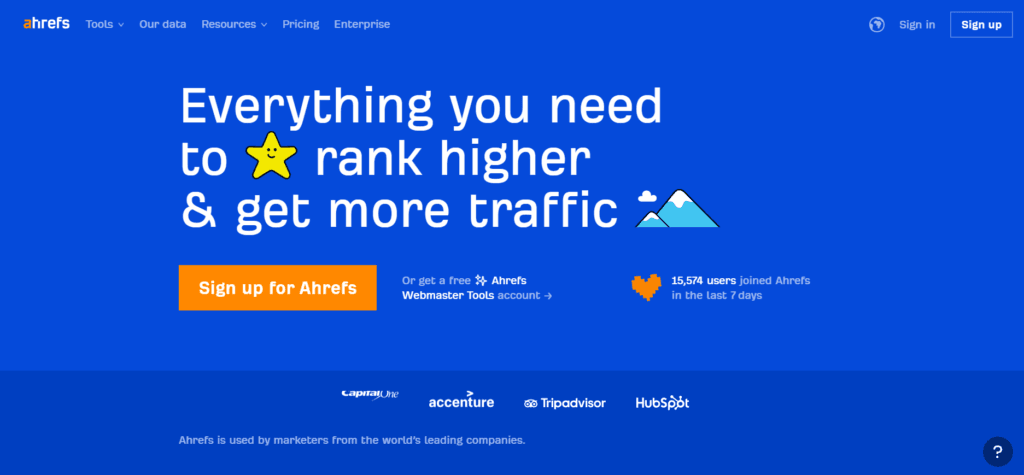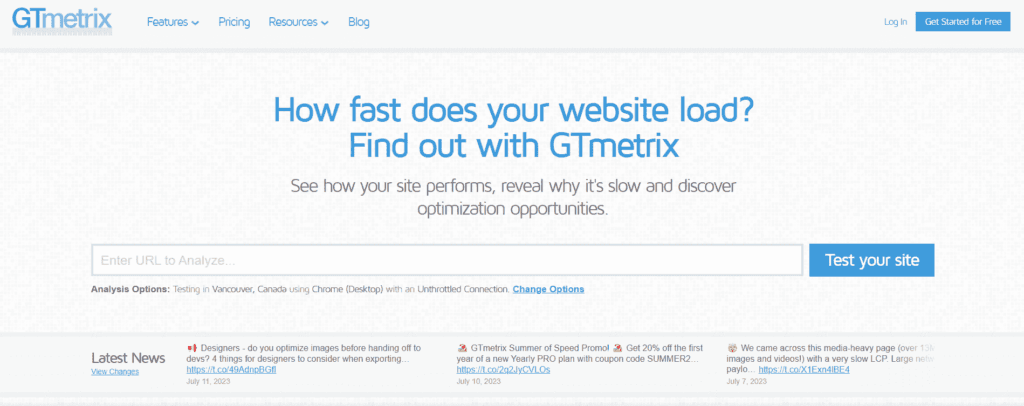Picture this: You’ve spent countless hours perfecting your website—meticulously selecting images, crafting compelling content, and ensuring its design aligns with your brand.
Yet, despite these efforts, your website’s traffic remains stagnant, conversions are rare, and the digital silence is deafening. What could be the problem? Often, the root cause is poor SEO (Search Engine Optimization) performance.
Enter the SEO Audit — a comprehensive evaluation of your website from an SEO perspective.
This guide is tailored to give you a step-by-step breakdown of conducting a thorough SEO Audit, ensuring that your website’s visibility and performance are nothing short of stellar.
Understanding the Basics of SEO Auditing
What is an SEO Audit?
An SEO Audit is akin to a health check-up for your website. It examines various elements—both on-page and off-page—to determine how well your site aligns with best SEO practices. By identifying the bottlenecks, you can strategize improvements to enhance search visibility and user experience.
Why is an SEO Audit Important?
In a digital world where competition is fierce, and algorithms are ever-changing, staying ahead requires constant vigilance. SEO Audits offer:
Clarity: Understand where your website stands in the grand scheme of SEO.
Competitive Edge: By optimizing your website, you position yourself ahead of competitors who might be neglecting their SEO.
Improved User Experience: Many aspects of SEO, such as site speed and navigation, directly influence user satisfaction.
Increased ROI: With better visibility comes more organic traffic and, consequently, higher returns on your digital investments.
Common Issues Identified in an SEO Audit
While each audit is unique, several recurring issues plague many websites:
Technical flaws: Slow loading times, broken links, or mobile unresponsiveness.
Content gaps: Outdated content, missing meta descriptions, or keyword underutilization.
External challenges: Toxic backlinks, poor social media integration, or weak domain authority.
Tools Required for an SEO Audit
The digital landscape offers an arsenal of tools to simplify your auditing process:
Google Search Console: Free tool by Google providing insights into your website’s performance and issues.
SEMRush & Ahrefs: Comprehensive platforms for on-page, technical, and off-page analysis.
Screaming Frog: Website crawler that highlights technical problems.
GTmetrix: Evaluates website speed performance.
On-Page SEO Audit
Title Tags, Meta Descriptions, and URL Structure
Title tags, often the first point of interaction in search results, should be concise, relevant, and carry your primary keyword. A meta description, while not directly affecting rankings, can significantly influence click-through rates. It should encapsulate the essence of the content in under 160 characters.
URL structures, often overlooked, are critical too. They should be:
Descriptive: URLs should indicate the content’s nature.
Concise: Avoid unnecessary words and parameters.
Keyword-rich: Where appropriate, include primary keywords.
Heading Tags and Keyword Placement
Headings are not just design elements; they help search engines grasp your content’s structure. Proper usage of H1s for titles, followed by H2s, H3s, etc., for subheadings is vital. Also, ensure primary and secondary keywords are naturally integrated within these headings and throughout the content.
Content Quality and Relevance
Quality over quantity is the mantra. Engaging, unique, and in-depth content is favored by search engines and users alike. Ensure:
Relevance: The content should match user intent.
Freshness: Regularly update content, especially for topics that evolve over time.
Depth: Cover topics comprehensively, addressing possible user queries.
Internal Linking Structure
Internal links help distribute page authority and guide users to relevant content. A robust internal linking strategy should:
Use descriptive anchor text.
Link to deep pages (those buried within your site) rather than just the homepage or primary pages.
Avoid over-optimization; keep it natural.
Image Optimization
Images can be a silent killer for page speed if not optimized. Ensure images are:
Compressed to reduce file size without compromising quality.
Given descriptive file names and alt tags, aiding in accessibility and image search.

Technical SEO Audit
Technical SEO refers to optimizing your website for the crawling and indexing phase. It’s the foundation upon which your content is built; if your foundation is weak, no amount of content optimization can bring you the desired results. A technical SEO audit ensures that search engines can efficiently crawl, interpret, and index all the pages of your site.
Website Loading Speed
Importance: A slow-loading website can increase the bounce rate, thereby negatively impacting rankings. Google considers page speed a ranking factor because it directly affects the user experience.
Audit Process: Utilize tools like GTmetrix, Pingdom, and Google PageSpeed Insights.
Recommendations: Compress images, leverage browser caching, minify JavaScript and CSS files, and consider using a Content Delivery Network (CDN).

Mobile-Friendly Analysis
Importance: With mobile searches overtaking desktop searches, having a mobile-optimized site is paramount.
Audit Process: Google’s Mobile-Friendly Test can show if your site meets mobile optimization standards.
Recommendations: Implement a responsive design, optimize buttons and CTAs for mobile use, and ensure text is readable without zooming.
XML Sitemap Evaluation
Importance: An XML sitemap helps search engines understand the structure of your website and index it effectively.
Audit Process: Check if the XML sitemap is registered with Google Search Console. Ensure it’s updated and free from errors.
Recommendations: Use tools like Screaming Frog to generate an XML sitemap. Exclude any ‘noindex’ pages.
Robots.txt Review
Importance: The robots.txt file instructs search engine bots about which pages to crawl and which to ignore.
Audit Process: Ensure that essential pages aren’t being blocked and that the file exists.
Recommendations: Regularly update your robots.txt file, especially after adding new sections to your website.
Checking for Duplicate Content
Importance: Duplicate content can confuse search engines and lead to penalization.
Audit Process: Use tools like Siteliner and Copyscape to identify and eliminate any repeated content.
Recommendations: Employ canonical tags if certain duplicate content is unavoidable. Always strive for unique and original content.
HTTPS and Security Check
Importance: Google considers HTTPS a ranking factor. A secure site promotes user trust.
Audit Process: Check if the site has an SSL certificate. Ensure URLs redirect from HTTP to HTTPS.
Recommendations: Purchase and renew an SSL certificate regularly. Work with your hosting provider to ensure proper implementation.
Structured Data and Schema Markup
Importance: Structured data helps search engines understand the context of your content, enhancing search visibility and user experience.
Audit Process: Use Google’s Structured Data Testing Tool to see if schema markup is correctly implemented.
Recommendations: Consider adding schema markup for articles, products, events, and other relevant website sections.
Broken Links and 404 Errors
Importance: Broken links disrupt the user experience and can dilute site authority.
Audit Process: Utilize tools like Ahrefs or Broken Link Checker to identify and rectify broken links.
Recommendations: Regularly monitor your website for 404 errors. Implement 301 redirects where necessary.
Canonicalization Check
Importance: Correct canonicalization ensures that search engines understand which version of a webpage is the “master.”
Audit Process: Check for proper use of canonical tags, especially in pages with potential duplicate content.
Recommendations: Ensure all variations of your website URL redirect to one version.
Server Response Codes
Importance: Server errors can prevent search engines from crawling your site.
Audit Process: Check server logs for 5xx errors and use tools like Screaming Frog for a comprehensive scan.
Recommendations: Address server issues immediately, work closely with your hosting provider, and ensure server uptime.
By the end of the technical SEO audit, you’ll have a clear picture of the architectural health of your website. Addressing these foundational elements ensures that the effort you put into on-page and off-page optimization isn’t wasted.

Off-Page SEO Audit
Introduction to Off-Page SEO Audit
Off-Page SEO encompasses all activities and efforts made outside of your website to improve its visibility, trustworthiness, and authority in the eyes of search engines and users. Contrary to popular belief, off-page SEO isn’t just about link building; it encompasses a myriad of strategies that together foster a reputable online presence. Let’s dissect this intricate component of your SEO strategy.
Backlink Profile Analysis
Importance: Backlinks, or inbound links from external sites, serve as endorsements of your content. However, not all backlinks are created equal.
Deep Dive: The quality and relevance of sites linking to you play a critical role in determining the weight of that endorsement. For instance, a backlink from an authoritative news site holds more weight than a link from a lesser-known blog. It’s essential not just to gather backlinks but to earn high-quality, relevant backlinks.
Audit Process: Utilize tools like Ahrefs, SEMrush, or Moz’s Link Explorer to analyze your backlink profile, examining the quality, relevance, and diversity of your links.
Recommendations: Discard or disavow toxic links. Create compelling content and partnerships to earn valuable backlinks.
Social Media Presence and Signals
Importance: Social signals, such as shares, likes, and comments, may indirectly influence SEO. While search engines haven’t confirmed these as ranking factors, they are indicators of content quality and popularity.
Deep Dive: A thriving social media presence can amplify content reach, driving more traffic to your site. It also aids in brand-building, potentially leading to more branded searches, which are a definitive ranking factor.
Audit Process: Review your active social media profiles. Measure engagement rates, content shares, and the frequency of brand mentions.
Recommendations: Strengthen your social media strategy, focusing on engagement-driven content and active community building.
Brand Mentions
Importance: Non-linked brand mentions, known as implied links, can boost your site’s authority and trustworthiness.
Deep Dive: Google’s Gary Illyes referred to these as “implied links” suggesting that search engines may consider mentions of a brand or website, even if they aren’t linked.
Audit Process: Use tools like Mention or Brand24 to track instances where your brand or products are mentioned online.
Recommendations: Foster positive brand sentiment through PR, content marketing, and customer service.
Competitor Backlink Analysis
Importance: Understanding where your competitors are getting their backlinks can unveil untapped opportunities for your own site.
Deep Dive: By scrutinizing the backlink profile of your competitors, especially those ranking higher than you, it’s possible to find industry-specific link building opportunities. Maybe they guest blog on a particular site or are members of influential industry directories.
Audit Process: Use tools like Ahrefs to identify where competitors’ backlinks originate. Filter out high-authority and relevant opportunities.
Recommendations: Pursue similar high-quality link-building strategies without blatantly copying your competitors.
Referral Traffic
Importance: High referral traffic from external sites is an indicator of your website’s quality and relevance to a broader audience.
Deep Dive: Referral traffic can be especially beneficial when it’s coming from authoritative sites in your industry. It not only increases your website’s traffic but also its potential for conversions.
Audit Process: Dive into Google Analytics to identify top referral sources and the quality of traffic they’re driving.
Recommendations: Nurture relationships with top referral sources. Consider partnerships or collaborations to boost referral traffic.

Guest Posting and Content Syndication
Importance: Guest posting can be an effective way to earn high-quality backlinks, while content syndication can amplify content reach.
Deep Dive: When done right, guest posting on authoritative sites in your niche can establish you as an industry expert and drive targeted traffic to your site. Content syndication, on the other hand, involves republishing your content on third-party platforms to enhance visibility.
Audit Process: Review sites where you’ve guest posted or syndicated content. Assess the quality of traffic and backlinks from these platforms.
Recommendations: Always prioritize quality over quantity when guest posting. For syndication, ensure the third-party platform uses a canonical tag pointing to your original content to avoid duplicate content issues.
By the conclusion of the off-page SEO audit, you should have a holistic understanding of your digital footprint outside your website. Aligning these external signals with your on-site strategies can pave the way for robust online visibility and authority.
User Experience (UX) Audit
Site Navigation and Structure
Easy navigation is key to retaining visitors:
Ensure a logical flow of information.
Use breadcrumbs for enhanced user navigation.
Mobile User Experience
Test your site across various devices and screen sizes.
Ensure clickable elements aren’t too close together and that text is easily readable.
Page Layout and Design
First impressions count:
Maintain a clean layout with well-defined sections.
Avoid pop-ups and intrusive interstitials that disrupt user experience.
Call to Action (CTA) Placement and Effectiveness
Your CTAs should be clear and compelling:
Place them strategically throughout the site.
Regularly A/B test them to optimize for conversions.
Local SEO Audit (If applicable)
Google My Business Profile Analysis
This is the cornerstone of local SEO:
Ensure the business profile is fully optimized with accurate information.
Regularly update with posts and respond to reviews.
NAP Consistency
Name, Address, and Phone Number (NAP) consistency across the web is crucial:
Any discrepancy can confuse search engines and users.
Use tools like Moz Local to check for NAP consistency.
Local Keyword Ranking
Monitor how you rank for local keywords.
Consider localized content or landing pages for better targeting.
Local Backlink Analysis
Local links can provide substantial local ranking boosts:
Aim for links from local newspapers, blogs, or business associations.
SEO Audit Reporting and Action Plan
Compiling Your Audit Report
Once you’ve meticulously examined every facet of your website’s SEO, it’s time to compile your findings. This will not only help you understand the health of your site but will also serve as a roadmap for your development and marketing teams.
Create a comprehensive document outlining each area audited, the issues found, and recommended actions.
For clarity, use visual representations like charts and graphs wherever possible.
Highlight high-priority issues that need immediate attention.
Prioritizing SEO Issues and Developing an Action Plan
All issues are not created equal. It’s vital to prioritize:
Critical Issues: These are urgent problems that might result in penalties from search engines or provide a poor user experience. For example, broken links, duplicate content, or security issues.
High Importance: These aren’t immediately damaging but can hinder your SEO performance over time. Examples include slow page speed, missing alt text, or poor mobile optimization.
Medium & Low Importance: These are long-term fixes that can fine-tune your performance.
Develop a phased action plan, tackling critical issues first, followed by high-importance ones, and then moving on to medium and low-importance tasks.

Establishing a Timeline for SEO Improvements
With a list of prioritized issues, it’s essential to set realistic timelines for their resolution:
Critical issues should typically be addressed within a week.
High-importance tasks might take a month or two, depending on their complexity.
Medium and low-importance tasks can be spread out over several months.
The key is consistent progress and regular check-ins.
Regular Monitoring and Adjustments
The digital landscape is ever-evolving. Regularly scheduled SEO audits (at least once a year, if not bi-annually) are essential:
Use the tools previously mentioned to monitor your site’s health.
Adjust your strategy based on new algorithm updates, market shifts, or changes in business goals.
Tools for SEO Auditing

#1 Google Search Console
Overview:
Google Search Console (GSC) is a free service provided by Google that helps webmasters monitor, maintain, and troubleshoot their site’s presence in Google search results. GSC offers tools and reports for various aspects of website performance, including indexing, mobile usability, and more.
Features:
Within GSC, webmasters can find which search queries are leading users to their site, the click-through rate of those queries, and how the site performs on mobile devices. Additionally, it notifies of any crawling errors that Google’s bots encounter.
Pros and Cons:
The most significant advantage of GSC is its cost: it’s free. This, coupled with the insights directly from Google, makes it indispensable. However, the downside is that its data can sometimes be generic, and users often have to utilize other tools to get more granular details.
Pricing:
It’s completely free.
USPs:
Being a Google product, GSC offers direct insights into how the search giant views your website, which is information you can’t get anywhere else.

#2 SEMrush
Overview:
SEMrush is a comprehensive SEO toolkit that provides solutions not just for SEO but also for paid traffic, content, and social media. It is renowned for its competitor analysis capabilities.
Features:
SEMrush allows you to track organic keywords, backlink strategies, and PPC keywords of your competitors. It can provide keyword rankings and changes over time, making it easier to monitor the site’s SEO health.
Pros and Cons:
SEMrush offers one of the most extensive keyword and domain databases, which is a significant advantage. Its user-friendly interface makes navigation easy, even for beginners. However, it comes at a premium price, and some users might find its plethora of features overwhelming initially.
Pricing:
Plans start at $119.95/month, with more advanced features available at higher price tiers.
USPs:
Its unparalleled competitor analysis capability sets SEMrush apart, allowing businesses to mirror successful competitors or spot gaps in the market.

#3 Ahrefs
Overview:
Ahrefs is an advanced SEO toolset that focuses mainly on backlink analysis and keyword research. With an extensive database, it’s favored by many SEO professionals.
Features:
From site audits to keyword explorers and content explorers, Ahrefs is feature-rich. It provides insights into organic traffic, backlink data, and even the most shared content related to your keyword.
Pros and Cons:
Its backlink database is one of the most extensive, which is a boon for those prioritizing link-building. On the flip side, its pricing can be prohibitive for some smaller businesses, and its interface might seem complex to novices.
Pricing:
Plans begin from $99/month and can go up based on the depth of features required.
USPs:
Ahrefs is often lauded for its accuracy in backlink analysis, making it a go-to tool for those particular about link-building strategies.

#4 Moz Pro
Overview:
Moz Pro is an all-in-one suite of SEO tools designed to cover every aspect of optimization, from keyword research to link-building and site audits.
Features:
The suite offers insights into keyword rankings, site crawlability, page optimization scores, and potential SEO issues. Their proprietary Domain Authority and Page Authority metrics are used widely in the industry.
Pros and Cons:
Moz Pro’s strength lies in its user-friendly interface and robust community and educational resources. However, some users feel it doesn’t delve as deep into backlink data as competitors like Ahrefs.
Pricing:
Packages start from $99/month, with premium features available at higher tiers.
USPs:
Moz Pro stands out for its educational resources, making it perfect for beginners. The Moz community is also active, providing a platform for users to discuss, share, and learn.

#5 Screaming Frog SEO Spider
Overview:
Screaming Frog’s SEO Spider tool is a versatile crawler designed to extract vital SEO data from websites. It operates directly from your computer, making it a favorite among many for its speed and efficiency.
Features:
This tool offers insights into broken links, page titles and metadata, duplicate content, redirect paths, and much more. Its ability to visualize site architecture is invaluable for larger websites.
Pros and Cons:
The immediacy of results due to local operation is a significant plus. Furthermore, the tool offers in-depth insights that are especially beneficial for technical SEO. However, its user interface might seem a tad outdated to some, and the learning curve can be steep for beginners.
Pricing:
A free version is available with a limitation on the number of URLs you can crawl. The paid version comes at a yearly license fee of £149.
USPs:
Its versatility in providing detailed crawl data right from your desktop sets Screaming Frog apart. It’s ideal for those in need of in-depth, technical audits.

#6 Woorank
Overview:
Woorank is an easy-to-use website analysis tool that provides insights into various aspects of website performance and optimization opportunities.
Features:
Woorank delves into site crawlability, mobile responsiveness, backlink analysis, and more. It also presents its findings in a straightforward manner, making it great for those who prefer concise reports.
Pros and Cons:
Its simplicity and clarity stand out. It’s particularly beneficial for those who need a quick SEO audit without diving deep into minutiae. However, seasoned SEO professionals might find its data too surface-level for comprehensive analysis.
Pricing:
Plans start at $59.99/month.
USPs:
Woorank’s simplicity is its USP. For businesses that want a quick, clear snapshot of their website’s SEO health, Woorank is ideal.

#7 Ubersuggest
Overview:
Developed by Neil Patel, Ubersuggest began as a simple keyword suggestion tool but has since evolved into a comprehensive SEO tool.
Features:
From keyword research, backlink data, site audit capabilities to content ideas, Ubersuggest has expanded its offerings. It provides an overview of your website’s health, organic keywords, and more.
Pros and Cons:
It’s user-friendly, and its free version offers a wealth of information, making it a favorite among startups and small businesses. However, seasoned SEO professionals might crave more in-depth data and insights.
Pricing:
There’s a free version with limited capabilities, while premium plans start at $29/month.
USPs:
Affordability combined with a plethora of features makes Ubersuggest a valuable tool for those on a budget.

#8 GTmetrix
Overview:
GTmetrix is a specialized tool focusing on website speed performance, which is crucial for SEO and user experience.
Features:
GTmetrix analyzes a site’s loading speed and provides actionable recommendations to optimize it. It offers insights from various performance scores, such as PageSpeed and YSlow.
Pros and Cons:
The detailed breakdown of performance metrics and clear recommendations are invaluable. However, it’s specialized nature means it won’t provide a holistic SEO overview.
Pricing:
While it offers a valuable free version, PRO plans start at $10/month.
USPs:
For those specifically looking to optimize site speed for better SEO, GTmetrix is a top contender.

#9 DeepCrawl
Overview:
DeepCrawl is a cloud-based web crawling tool, designed to audit your website and discover potential SEO issues.
Features:
It offers insights into indexation, validation errors, duplicate content, and other technical SEO elements. DeepCrawl can also track changes, helping businesses monitor the impact of adjustments made.
Pros and Cons:
Its cloud-based nature ensures powerful crawling capabilities without straining local resources. The detailed reports are exceptional. However, it may be a tad expensive for smaller operations.
Pricing:
Contact DeepCrawl for specific pricing details.
USPs:
DeepCrawl’s robustness and its focus on deep technical audits make it a significant player in the SEO tool space.

#10 Sitebulb
Overview:
Sitebulb is a desktop-based website crawler offering detailed website audits. Known for its intuitive interface, it’s a favorite among many SEO professionals.
Features:
Beyond traditional crawling, Sitebulb presents its findings with visualizations, making the data easy to comprehend. It covers areas like URL structure, page depth, and content issues, among others.
Pros and Cons:
Sitebulb’s detailed visual reports stand out, breaking down complexities. The one-time payment for the software is also a draw for many. However, being desktop-based, it might require significant resources for larger websites.
Pricing:
The pricing for Sitebulb starts at a one-time fee of $295.
USPs:
The visual representation of website architecture and issues is Sitebulb’s standout feature, offering users a unique view of their website’s SEO health.
Wrapping it up
Conducting an SEO audit is not a one-time activity. It’s an ongoing process that helps businesses stay aligned with search engine best practices and ahead of their competitors. It’s akin to a regular health check-up for your website.
By identifying and rectifying issues in real-time, businesses can ensure that their digital presence remains robust, yielding a consistent inflow of organic traffic and conversions. As search algorithms evolve and market dynamics shift, keeping your website’s SEO in optimal shape will be instrumental in ensuring long-term digital success.
Read Next:
- How to Create Vision and Mission Statements for Your Startup: All You Need to Consider
- Best Business Intelligence Software (in 5 BI Categories): 2023
- 9 Definitive Ways to Improve and Manage Your Small Business Finance
- What is the Minimum Viable Product? – A Guide on What MVP Means
- LLP vs LLC: Which One Should You Go For in the US?





















